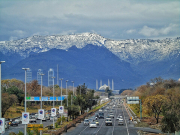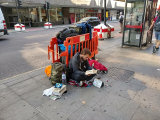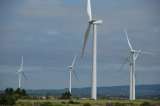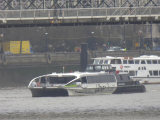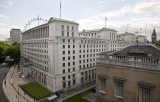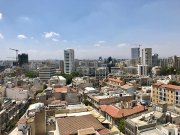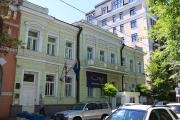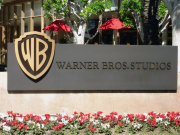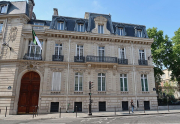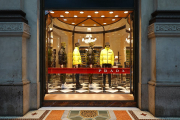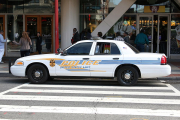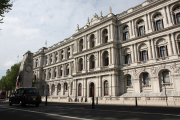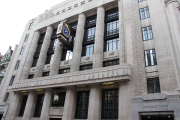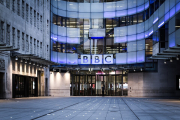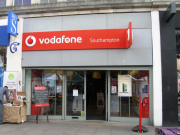
There is the United Kingdom, there is England, and then there is London. . Three are related, but strictly speaking, London seems to be a world apart from the rest of Britain, marching to its own, unique rhythm.
Everything in London comes across as new and different. Throughout history, its people, fashions, trends and street life have always expressed the very essence of city life. Like New York, London is a city that never sleeps. Millions of tourists arrive in London every year, many of them already half in love with the city. You see them in the London Underground (the tube), on red double decker buses and stepping into taxis. The new central London traffic zone, where private transport is essentially banned, makes the sights of London more navigable than ever before. It is
also possible, and very pleasant, to walk through the city on foot, or to rent a bicycle along the Victorian Embankment on the Thames.
The first City of London
What is today London was once a small, rather insignificant settlement called Plowida, a name that means settlement on the wide river . The Romans conquered the region in the first century and founded the fortified city of Londinium around 47 CE. The Roman city of London covered an area of approximately 1 km2. The Romans built a bridge over the Thames, and used its banks as a shipping port for minerals and agricultural products. Londinium grew very quickly in the second century, when it became the commercial centre of the Roman province of Britannia Superior.
The Anglo Saxon city
In 314, London became a bishop s see by order of Emperor Constantine. By that time, the Roman Empire was growing weak. Without imperial patronage, London settled into a long period of decline. By the time the Romans had officially departed from their colony of Britannia in 410, the city was essentially depopulated. After 150 years of near abandonment, the Anglo Saxons arrived to take advantage of London s strategically advantageous position on the Thames. They did not settle there permanently, however, until 604, and even they chose not to rebuild within the ruins of the ancient fortified city, but somewhat further west. The new city, named Lundenvic ( London Harbour ), was declared the capital of the Kingdom of Essex. Its centre lay to the east of Trafalgar Square s present location.
The Norman invasion
The Normans defeated the Anglo Saxons at the Battle of Hastings in 1066. After entering London, William the Conqueror had himself crowned king of Britain in Westminster Abbey, which had just been completed the year before. All British monarchs ever since that time have been crowned there. In order to discourage any remaining Anglo Saxon warriors from revolting, William had three fortresses built. Of the three Baynard s Castle, Monfichet s Castle and the Tower of London — only the last survives today. In the interest of gaining popularity and ensuring domestic peace, William openly adopted the same rights, privileges and laws that had governed London during the Anglo Saxon period.
A city in its prime
The sixteenth century was probably London s golden age. After the city of London annexed Westminster around 1600, it quickly became the centre of the British Empire. London was one of the most important European commercial cities on the North Sea, despite the fact that the city was located some 30 km away from the sea on the banks of the Thames estuary. During the late sixteenth century, London s cultural renaissance was in full swing. A great many theatres were built along the south bank of the Thames, the most famous of which was the Globe, where many of William Shakespeare s plays were first performed. The New London.
The Great Plague and Fire of 1665 and 1666 left London shaken to its very foundations. Over 70,000 people died of plague and nearly two thirds of the city was consumed by flames. Architect Sir Christopher Wren was responsible for rebuilding London s many destroyed churches, including St. Paul s Cathedral. The destruction of residential buildings in the city led many residents to settle outside the city walls in new districts that became London s first suburbs.
Most aristocrats never returned to their city mansions, preferring to build townhouses in the now prestigious West End. Dickens London. The nineteenth century saw the construction of many important buildings and squares, including Trafalgar Square, Westminster Palace and Big Ben, the Royal Albert Hall, the Victoria and Albert Museum, Tower Bridge and the University of London. Prosperous times, however, are often accompanied by a dark shadow. Millions of the less fortunate were forced to live in overpopulated, filthy slums and suburbs. This was the London immortalized by Charles Dickens in novels like Oliver Twist and David Copperfield. By the turn of the twentieth century, London was far and away the biggest city on Earth: a whopping 6.6 million people lived there in 1901. At the time, London was undoubtedly the most powerful city in the world.
The ravages of war.
London was badly damaged during World War II. The German Luftwaffe thoroughly destroyed its once uniform cityscape of Georgian and Victorian buildings, leaving large parts of the city centre and most of the East End completely levelled. After the war, housing complexes were built cheaply and rapidly. London s docklands never recovered economically from the effects of World War II. Ship traffic was rerouted and the old piers and warehouses fell further into ruin, until city planners rediscovered the district in the 1980s.
Redevelopment has made Docklands one of London s hottest commercial and residential locations. A wonderland of things to see. There is a greater concentration of important sights and tourist attractions in London than anywhere else in Britain. Greenwich Park, Westminster Palace and Abbey, the Royal Botanic Gardens and the Tower of London are all on the UNESCO World Heritage List. Many of London s most popular museums offer free admission. Recent additions include British Airway s gigantic big wheel. Known as the London Eye, it is actually a slowly rotating observation platform from which most of the city can be seen. Madame Tussaud s Wax Museum, the changing of the guard at Buckinham Palace, a tour of the Tower of London, the Flower Market on Sundays, the bustle of Piccadilly Circus and Trafalgar Square ... the list is endless.
The finest entertainment
Those eager for culture will find that the British capital is full of variety. While the mostly modern cultural facilities may look like nondescript concrete blocks from the outside, world class performances are underway within. The Barbican Arts Centre is a case in point. Opinions about the exterior are divided; although it has its fans, it has also been described as an architect s nightmare. Still, there is no disagreement on the excellence of its presentations, which include performances by the Royal Shakespeare Company, the London Symphony Orchestra and the London Classical Orchestra. Visitors should not miss an opportunity to attend a performance here. Breath of fresh air in the city. London does have a number of tranquil oases amidst the hectic activity of the city. London s numerous parks are popular destinations for those who like to stroll out in the open air. Hyde Park is located in west central London. This spacious park was once a royal hunting ground, the scene of bloody duels and executions, as well as a venue for exciting horse races. During World War II, it was transformed into a gigantic potato field. Today it is a fresh air getaway for sun worshippers, or for those who want to take a boat ride on the Serpentine, its sinuous lake.
One corner of the park, near Marble Arch, is known as Speaker s Corner, where anyone can stand up and express his or her opinion before a more or less interested audience. In Regents Park, near London Zoo, the lovely Queen Mary Rose Gardens are a wonderful place to pause and reflect after a busy day of seeing the very many wonderful sights of London. Finally, the ambitious tourist may want to take a double decker bus or taxi north to Hampstead Heath, another vantage point that offers a magnificent view of the entire city.




































